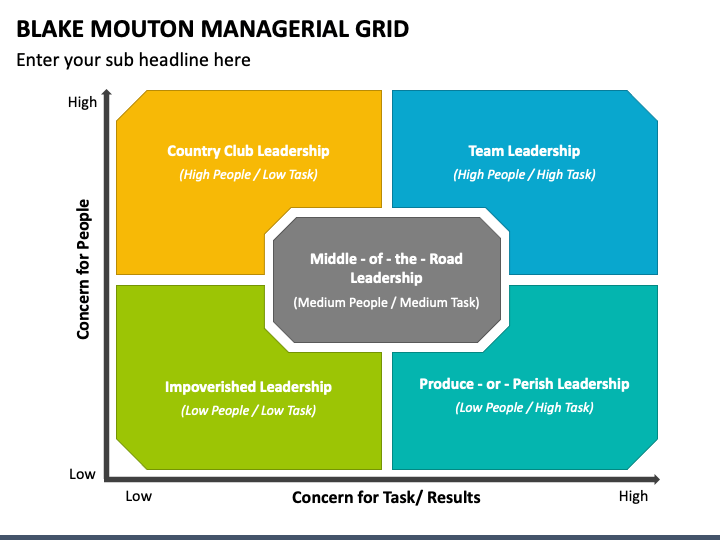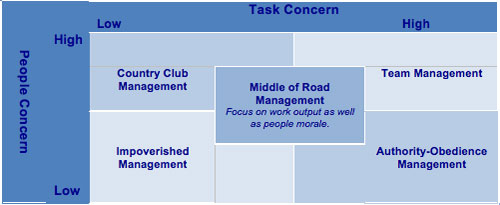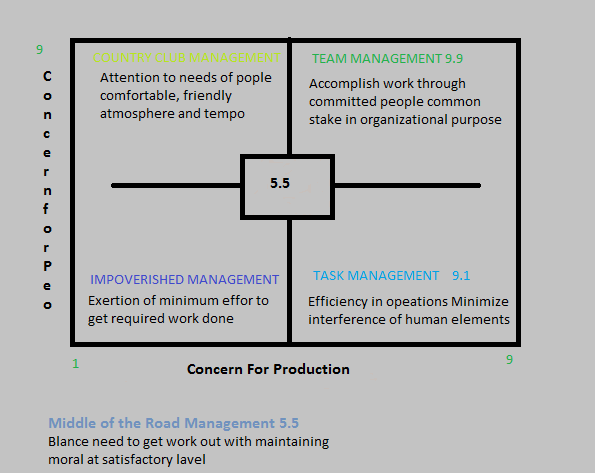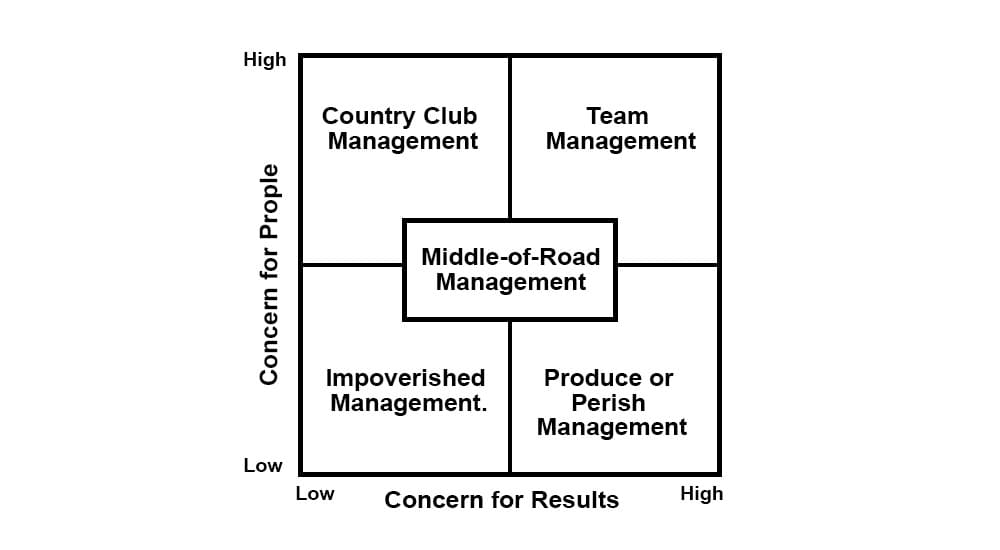The Blake and Mouton Leadership Grid is a tool used to evaluate and assess the leadership styles of individuals or organizations. It was developed in the 1950s by Robert R. Blake and Jane S. Mouton, and it has since been widely used in business and leadership development.
The Leadership Grid is based on two main dimensions: concern for people and concern for production. These dimensions are used to categorize leadership styles into five different quadrants: impoverished, country club, authority compliance, team, and middle-of-the-road.
The impoverished style is characterized by low concern for both people and production. This style is generally considered to be ineffective, as it does not adequately address either aspect of leadership.
The country club style is characterized by high concern for people and low concern for production. This style is often viewed as being too laid-back and lacking in direction, as the leader is more focused on maintaining a pleasant work environment than on achieving results.
The authority compliance style is characterized by low concern for people and high concern for production. This style is often associated with authoritarian leaders who are more focused on achieving results than on building relationships with their team.
The team style is characterized by high concern for both people and production. This style is generally considered to be the most effective, as it balances the need to achieve results with the importance of building relationships and fostering a positive work environment.
The middle-of-the-road style is characterized by moderate concern for both people and production. This style is generally seen as being neither effective nor ineffective, as it lacks the focus and direction of the other styles.
In conclusion, the Blake and Mouton Leadership Grid is a useful tool for evaluating and assessing leadership styles. It helps to identify the strengths and weaknesses of different styles, and can be used to develop more effective leadership strategies.







